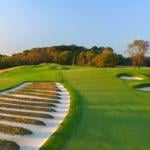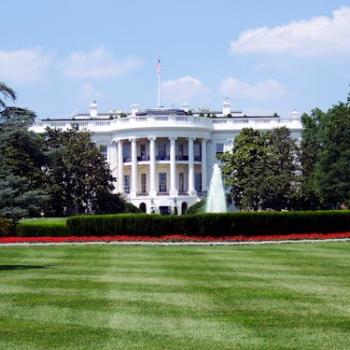Part 1
Private first class Kermit M. Zarley Jr. was discharged from the U.S. Army in the spring of 1964. (I still remember my dog tag #: ER18667197.) I had played only two rounds of golf during the past six months of active duty. That didn’t exactly prepare me for the new kind of battle I was about to undertake. I quickly exchanged my black, shiny, lace-up army boots for some colored, golf shoes with metal spikes on the soles. And my green, Army fatigues would now become history. At that time, I had more feel for my M-14 rifle than for my Bulls Eye putter. I was much more prepared to shoot bullets than to launch golf balls.
But I wanted to launch my PGA Tour career when the Tour came to my collegiate hometown of Houston, Texas. So, I began my pro golf career three weeks later at the 1964 Houston Open, played at Sharpstown Country Club. During my first two tournament rounds, on Thursday and Friday, I was paired with a Touring pro I had never heard of, a guy named Bert Yancey (1938-1994). He was beginning his career on the PGA Tour about the same time I was.
Yancey went on to considerable success on the Tour, playing full-time for the next thirteen years and winning seven PGA Tour tournaments. He never won a major, but he had several chances. Twice he finished third in the Masters, and fourth another time. And twice he finished third in the U.S. Open. Having lived in Augusta, Bert especially wanted to win the Masters. He even mapped out the course by making a colored, clay model of the Augusta National Golf Club layout. He thought it would help him learn better the many undulations of those fast greens.
That first time I played golf with Bert Yancey left a very vivid impression on my mind about him. Standing about six feet, one inch tall, blond-haired Yancey strolled down the fairway with a slow gait, clothes nicely pressed, pants riding high on his hips, shoulders back and head held high. His posture reminded me of my drill sergeant back at Fort Sam Houston Medical Training School. Being from Florida and Georgia, Bert spoke slowly and with a slight southern drawl. His words were always thoughtfully chosen.
But on the golf course, Bert Yancey was all business. He concentrated so intensely that he didn’t say hardly a word or crack a smile during those first two rounds. I thought, “This fella’ could pass for some young aristocrat.” That wasn’t too far off. I reasoned, “Maybe it’s just rookie nerves.” I had those, too.
I eventually discovered Bert Yancey to be a personable, pleasant guy, that is, off the golf course. Like a few pros on Tour, whatever trait of pleasing personality they had didn’t show itself on the golf course; but it blossomed off the course. There weren’t many Chi Chi’s Rodriguez’s and Lee Trevino’s around to entertain the fans with their witty quips, both on or off the course. Instead, I think Bert wanted to be like Ben Hogan on the course. Mr. Hogan was a thinking machine whose only words might be “you’re away.”
Sometime in the early 1970s, Bert Yancey and I were practicing our putting on the putting green at Rio Pinar Country Club, preparing for the Citrus Open there in Orlando, Florida. I struck up a conversation with Bert about my faith in Jesus Christ. He then related an experience he had as a cadet at the Military Academy at West Point. I didn’t know about it. Bert related that one Sunday morning in 1960 he attended the military chapel service to hear an evangelist guest speaker whose name he didn’t know. Bert was emotionally and intellectually moved by the man’s stirring message. An invitation was given to go forward and make a public profession of faith in Jesus Christ as Lord and Savior. Yancey the soldier, convinced in his mind and with joy in his heart, accepted the call up yonder and marched forward to join the Lord’s army. Soon afterwards, Bert learned that the evangelist speaker was some guy named Billy Graham.
A few days later, Yancey had what he called his first “emotional breakdown.” He was hospitalized for nine months and given a medical discharge. Military psychiatrists diagnosed Bert’s condition as “a religious depression.” So, they blamed his emotional breakdown on his recent, religious conversion experience at chapel and advised him to try to forget about it. As we were talking there on the putting green, Bert divulged that he hadn’t thought hardly at all about that experience since it happened. He then added that, according to those doctors’ orders, he wasn’t even supposed to be telling me about it. However, it didn’t seem to me that Bert was bothered at all talking about it. He also told me that he had not had another such breakdown since that happened, over ten years ago.
Not long after our conversation, Bert started attending his Presbyterian church at home near Philadelphia. He was most attracted to a Sunday school class there at his church mostly because it was engaged an in-depth Bible study. That interested Bert a lot. Blessed with a keen intellect, he immersed himself in some deep Bible study for the next few years. After about a year, Bert began to feel somewhat proficient in wielding the sword of the Lord, so he started attending the PGA Tour Bible Study. I, for one, was excited to hear Bert share with us the things he was learning from the scriptures. He was intellectually stimulating to the group. Sometimes, he cited some very distinguished Bible scholars whose books and Bible commentaries he had been reading.
In late 1974, the PGA of America asked Jim Hiskey to conduct a prayer breakfast as a spiritual kickoff for that association’s annual meeting, to be held at the end of the year in Hawaii. Jim thought of Bert Yancey and invited him to give his personal testimony there. That really interested Bert—to share with the club professionals about his faith in Jesus Christ. Like most born-agains, Bert Yancey felt some trepidation thinking of making a public speech about his Christian testimony for the first time, especially to hundreds of people. But he soon got over those jitters and was rarin’ to go.
Jim Hiskey, Bert Yancey, and Bert’s wife, Linda, arrived in Honolulu together. As the time approached for Bert to give his testimony, Jim thought he was getting hyper. He asked Linda, privately, if she thought Bert was all right. She thought he was fine.
Yancey’s presentation was well-received by the club professionals, so that Hiskey said the breakfast was a marked success. Bert was very elated about it.
From Hawaii, Yancey flew alone to Japan to play some golf exhibitions and conduct golf clinics there as his wife Linda flew home. Right after Bert registered at his Tokyo hotel, his concentration was diverted to a rock-and-roll band performing in the restaurant and bar. Bert wanted to check it out. The band was named “The Temptations.” As Bert looked on, grandiose feelings quickly surfaced in his psyche. He started shouting to the band members and the audience about the evils of rock and roll music. Yancey soon had to be physically restrained by security personnel. Newly-installed PGA Tour Commissioner and Yancey’s close friend, former Tour player Deane Beman, immediately flew to Tokyo to escort Bert back home. Poor Bert then had to be hospitalized. That had not happened to him since his breakdown at West Point, fourteen years prior.











